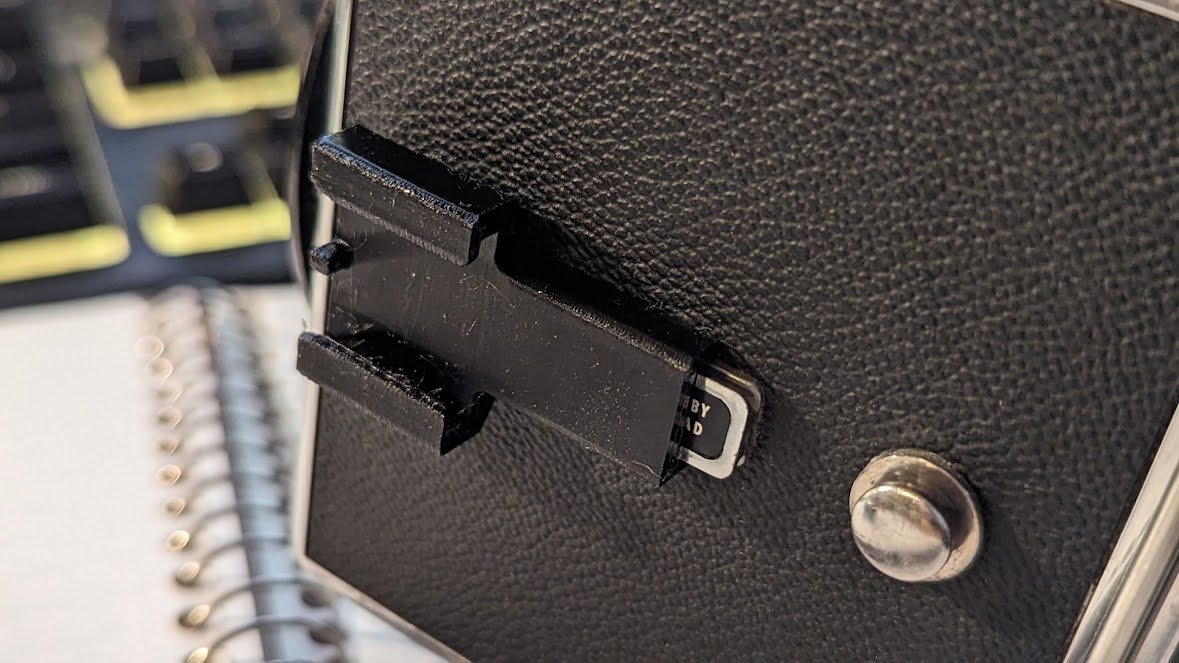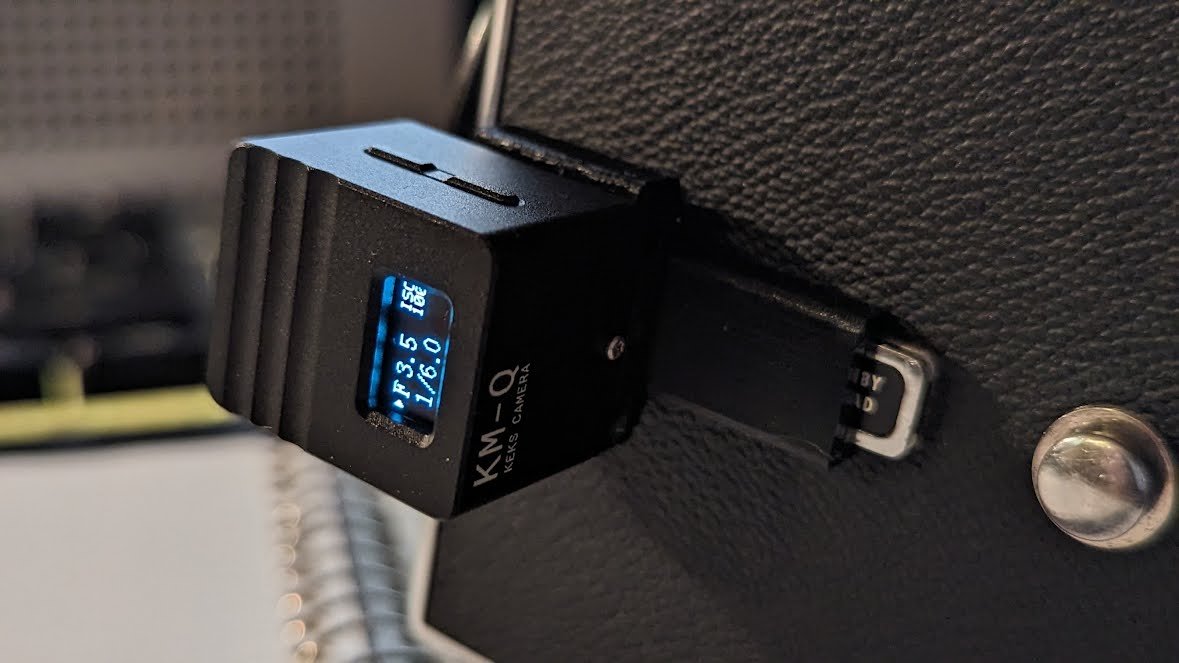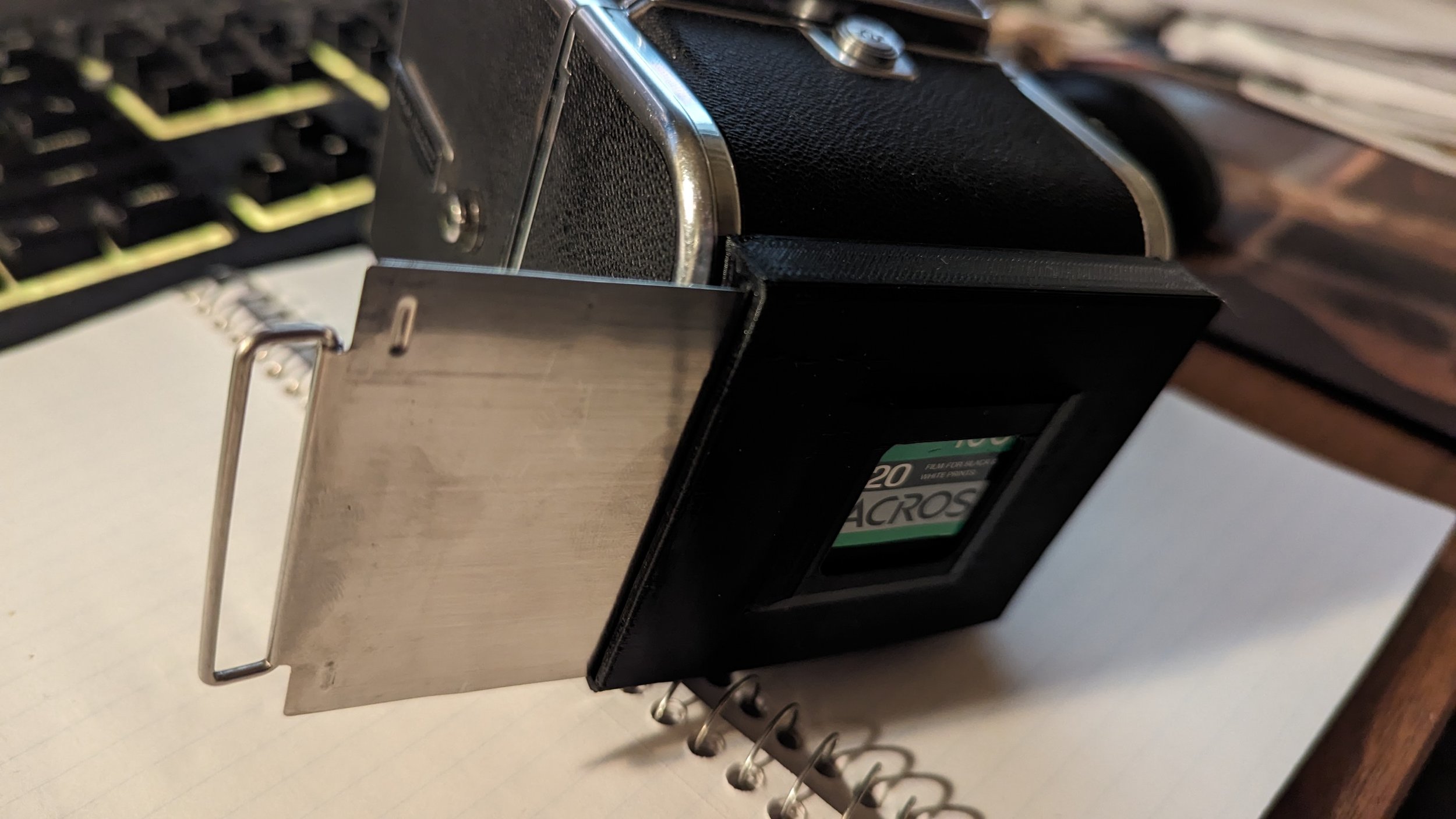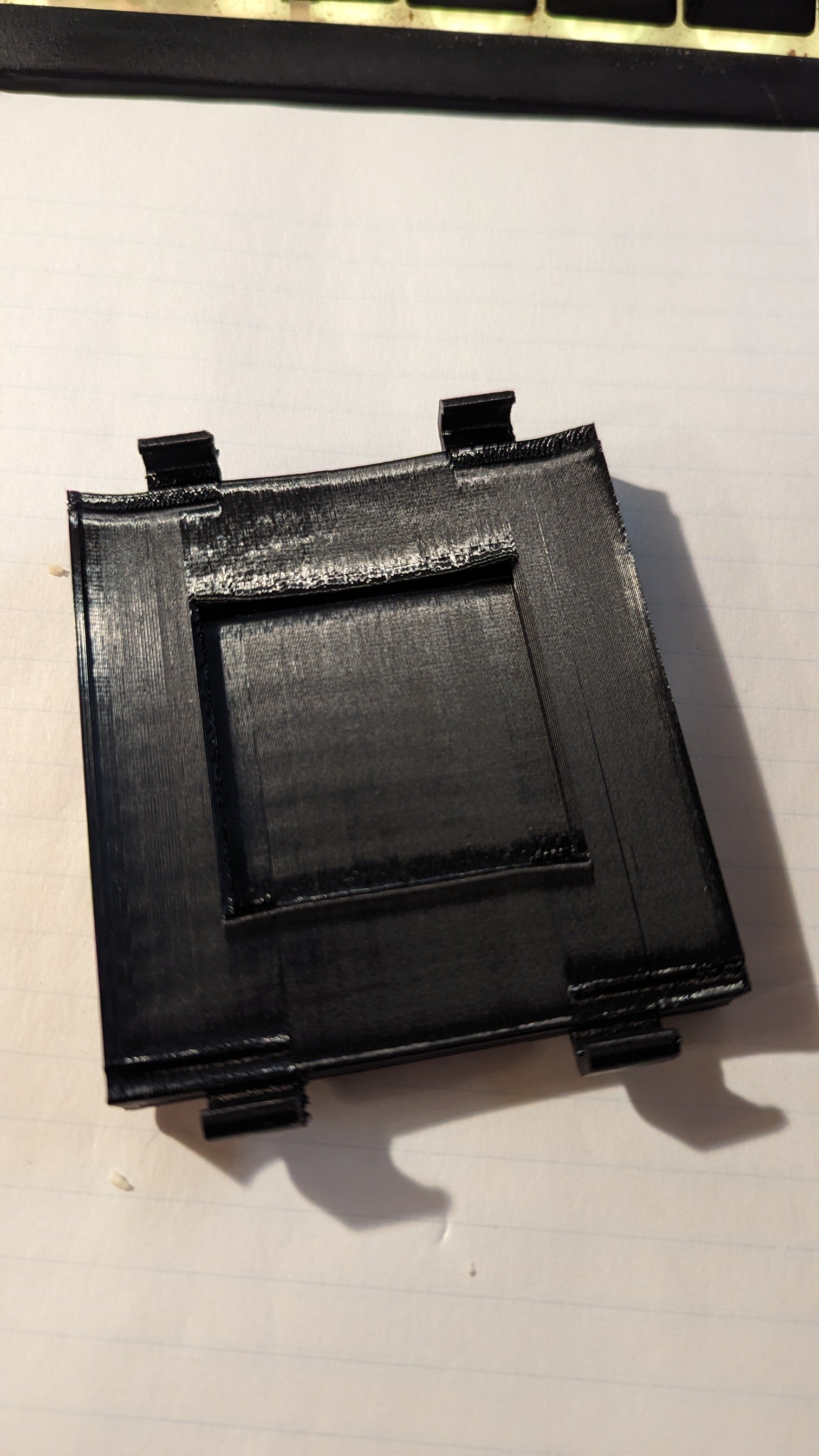3D printing and photography
3D printing and film photography
When I first heard about 3D printing I asked my friend Dave at a makerspace what they could really be used for. “They’re a hammer for every nail out there,” was the answer and it didn’t make much sense. It turns out that what Dave meant is that you need to review what your actual problems are because 3D printing can solve a vast majority of them you just need to consider what your actual problems are.
I still enjoy film photography, it’s slow, methodical, very limited with the shot quantity, and, in my case, monochromatic. The limits are what I like about it, being forced to really think about that composition and if it’s worth 1/12th of what I want to record that day. Quite the opposite from cards that hold gigabytes. One thing I had gotten over the holidays was a small Keks light meter, as hauling around a meter that is the size of my folding Agfa Isolette III is kind of ridiculous. So having a smaller option that slid into the cold shoe was a delight.
However, I looked over at my Hasselblad 500 and really wanted to find a way to attach the Keks to the Hassy, unfortunately for me the Hasselblad’s small rail would require a fairly expensive cold shoe solution. To add to the complexity the width of the cold shoe on the Hasselblad was larger than the one for the Agfa. So, checking the typical 3D printing file locations I found a good start to a printable rail onto the Hasselblad that I could modify to perfectly fit the Keks.
44 minutes later I had the solution in my hand and everything slid in perfectly to save me a lot of time, money and space in my bag.
Another solution to a problem that I found during this was with the Hasselblad’s dark slide. It slips into the film magazine and prevents the shutter from triggering until it’s removed. Whenever I’m out shooting I take it out and never know what to do with it, I’ll slip it into a pocket and forget about it untl it’s accidentally bent. So, delving back into a 3D drawing program called Sketchup I modified another design to clip snugly onto the back of the camera. Now the dark slide comes out, goes into the slot two inches back and reminds me that it has to go back where it came from.
So if you can’t figure out a solution to an annoyance you have with your camera gear contact me and we’ll talk over some ideas, there’s a very good chance there’s a solution that can be had in a much shorter time than you would think.






